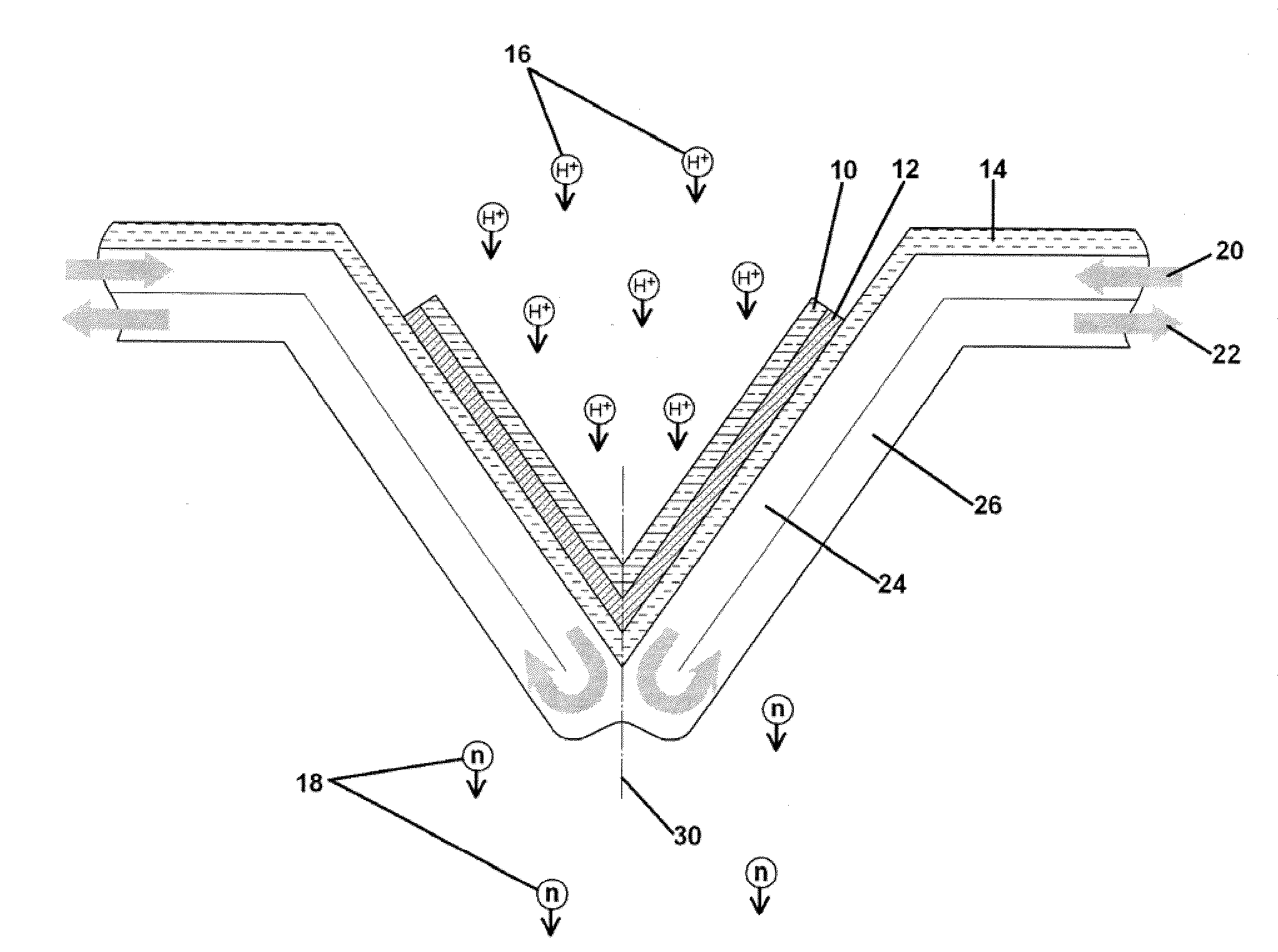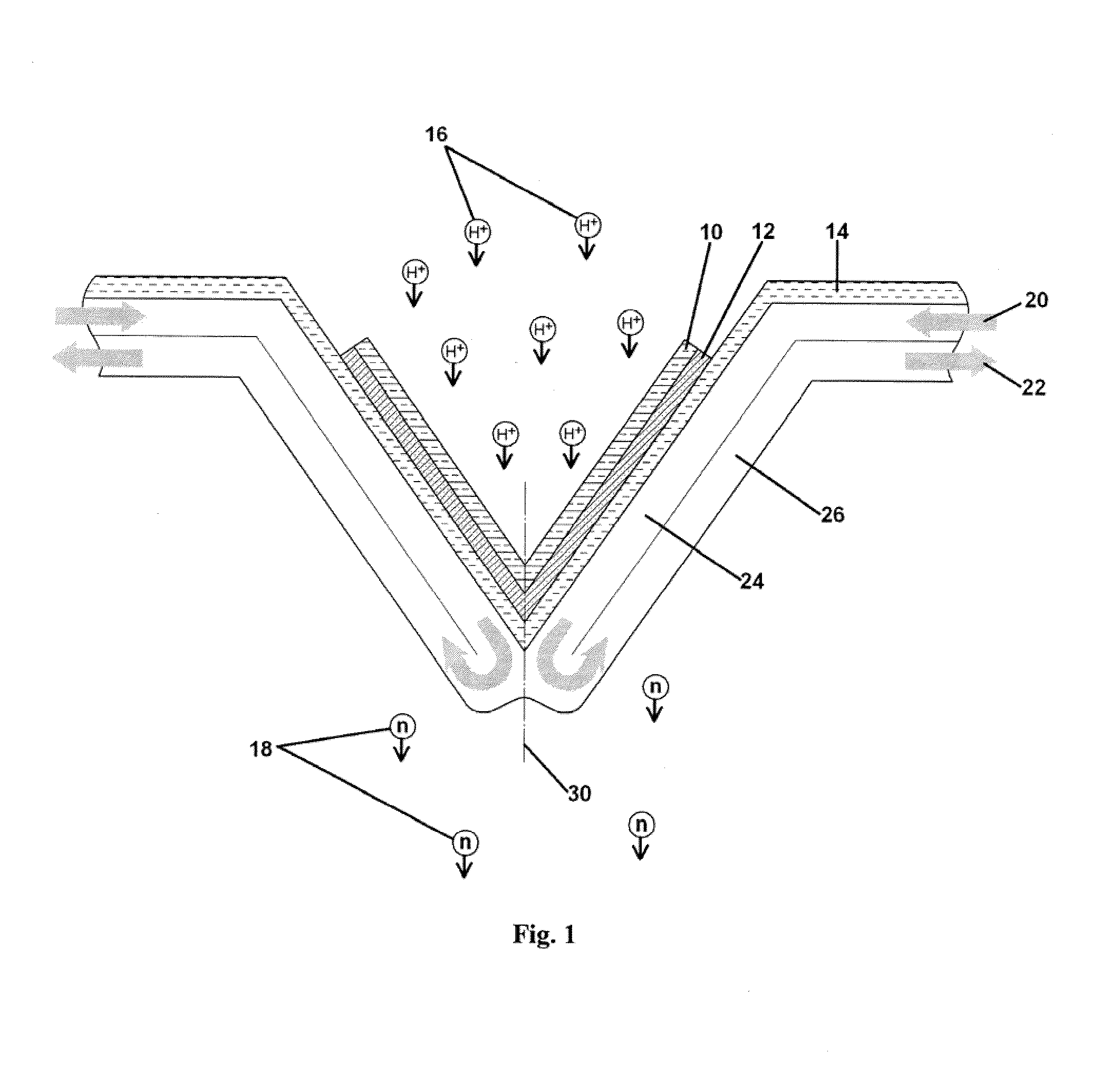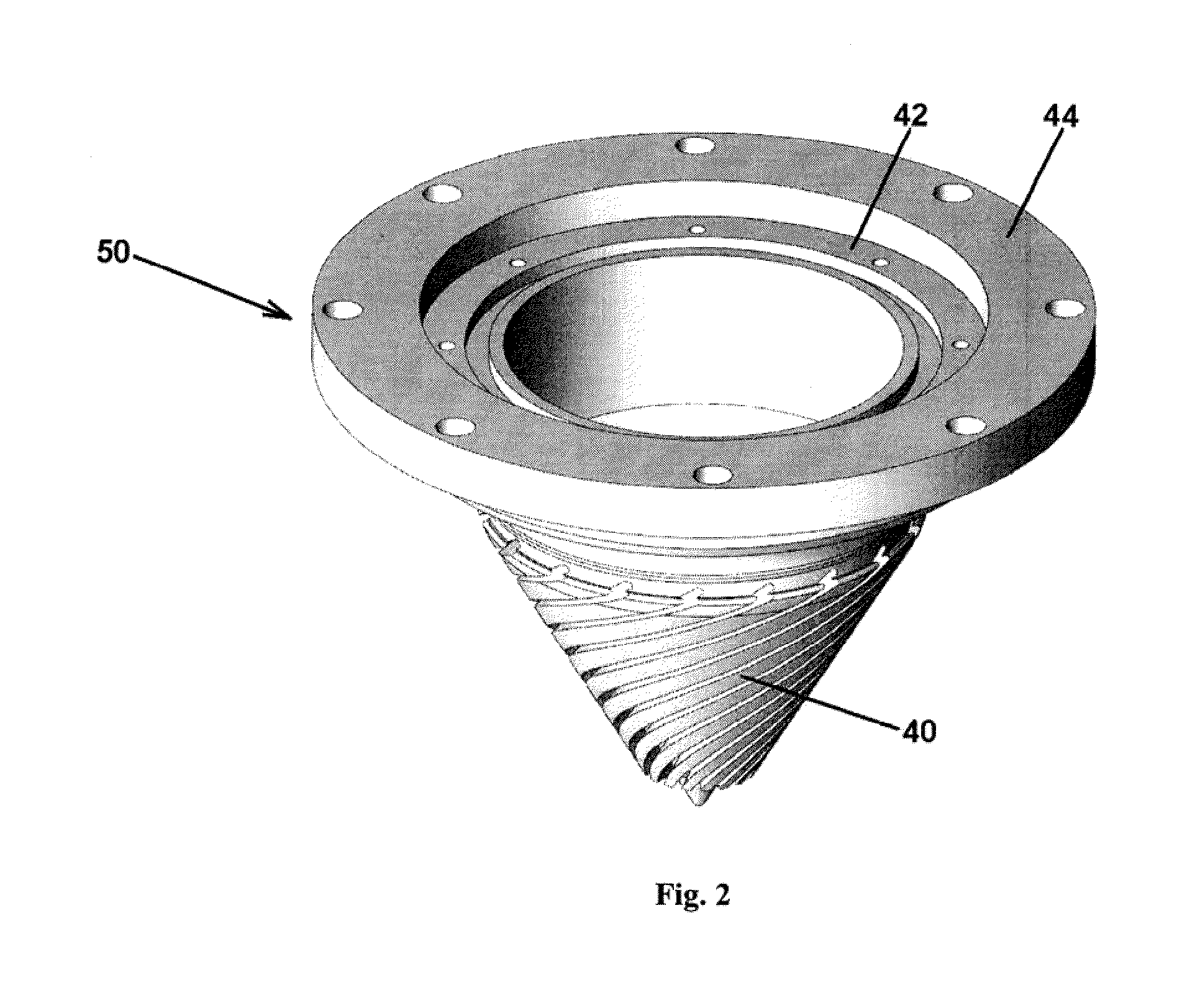High-Power-Density Lithium Target for Neutron Production
- Summary
- Abstract
- Description
- Claims
- Application Information
AI Technical Summary
Problems solved by technology
Method used
Image
Examples
example 1
[0038]An example of the preferred embodiment of the invention, designed to operate with a static, expanded, 2.5-MeV / 20-mA (50 kW) proton beam from an accelerator, is described.
[0039]Referring to FIG. 2, a copper heat exchanger cone 50 of base diameter of 10 cm and opening angle of 60 degrees contains 20 helical channels 40 of constant width (2 mm), depth (6 mm normal to cone surface), and pitch (one-half turn about the cone axis) on its exterior. The interior is electroplated with 10 μm of palladium (i.e. 20 μm in the beam direction), and the palladium is in turn coated under vacuum with 50 μm of lithium metal (i.e. 100 μm in the beam direction) by vapor deposition.
[0040]Heat exchanger 50, substrate, and target assembly described above mates with a coolant manifold 54 fabricated from aluminum that has been electroless nickel plated to protect it from galvanic corrosion, as shown in FIGS. 2A, 3B and 3C. A water-to-air seal is effected between heat exchanger 50 and coolant manifold 54...
example 2
[0042]Referring to FIGS. 2, 3A, 3B and 3C, a target heat exchanger 50 was fabricated from oxygen-free electronic (OFE) copper, having an interior conical surface with opening angle of 60 degrees and a diameter of 10 cm to support the target and substrate layers. The conical interior of heat exchanger 50 was electroplated with 40 μm of palladium to act as the hydrogen-diffusing substrate. Twenty (20) channels 40 for cooling water, each 0.6 cm×0.2 cm in cross-section, were milled into the exterior of the heat exchanger. Heat exchanger 50 fits into an azimuthally-symmetric coolant manifold 54 that directs coolant into and out of channels 40. Computational fluid dynamics calculations made in COSMOS FloWorks show that with 50 kW of beam heating and a pseudo-Gaussian power density distribution, the peak target surface temperature remains below 150 deg. Celsius—and thus a lithium layer will remain solid with considerable safety margin—at a flow rate of 80 kg min−1 through target heat excha...
PUM
 Login to View More
Login to View More Abstract
Description
Claims
Application Information
 Login to View More
Login to View More - R&D Engineer
- R&D Manager
- IP Professional
- Industry Leading Data Capabilities
- Powerful AI technology
- Patent DNA Extraction
Browse by: Latest US Patents, China's latest patents, Technical Efficacy Thesaurus, Application Domain, Technology Topic, Popular Technical Reports.
© 2024 PatSnap. All rights reserved.Legal|Privacy policy|Modern Slavery Act Transparency Statement|Sitemap|About US| Contact US: help@patsnap.com










